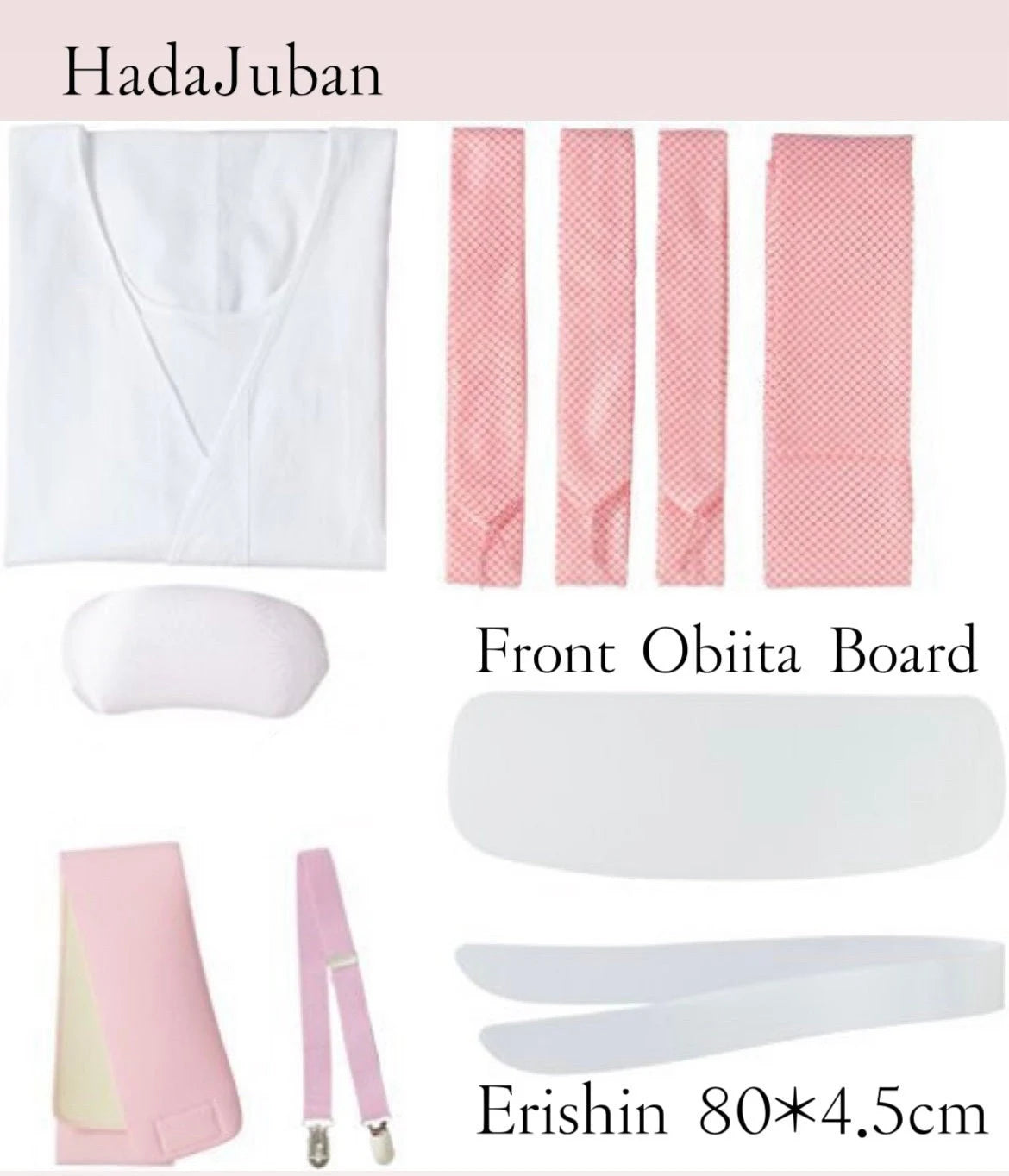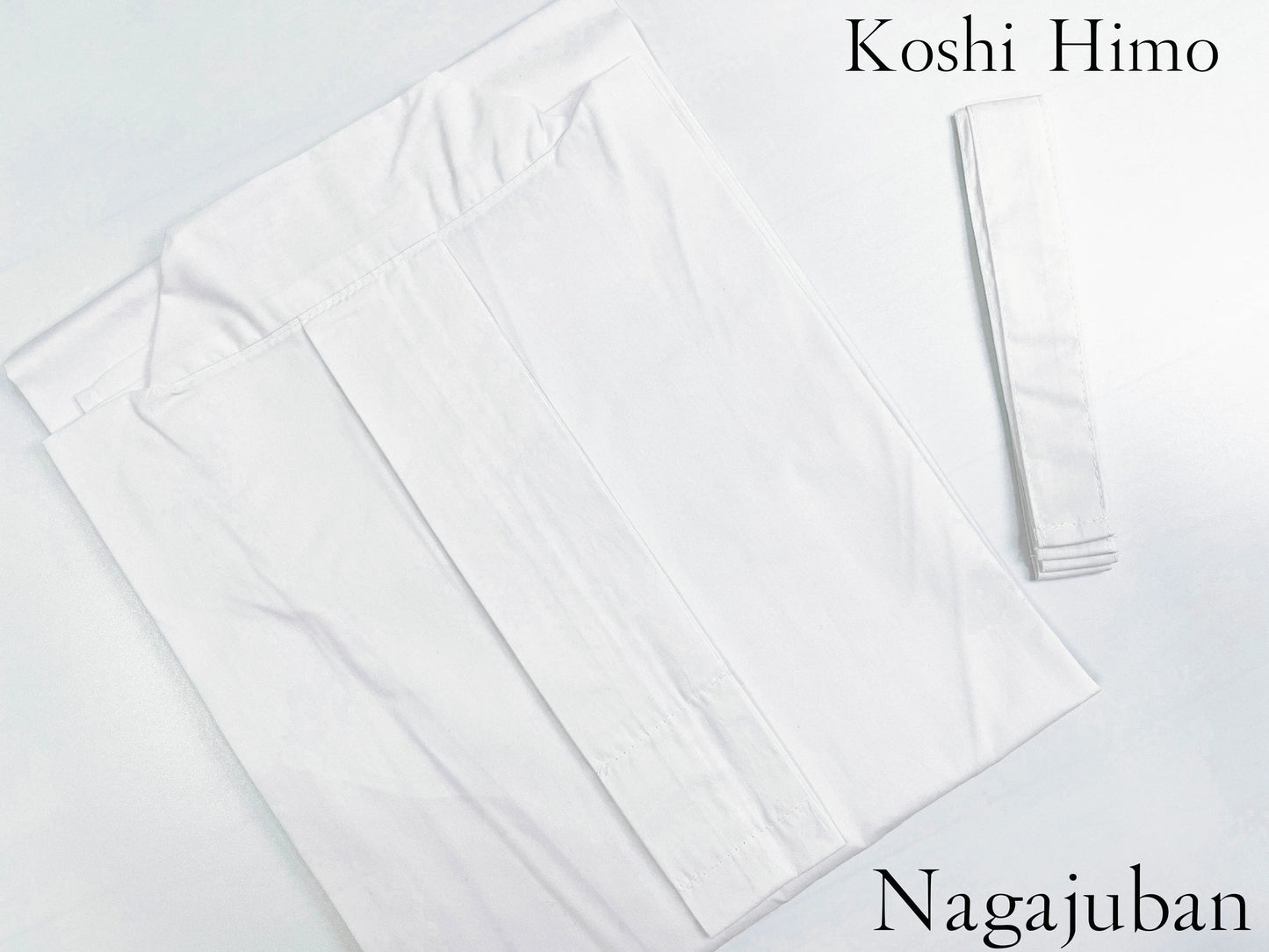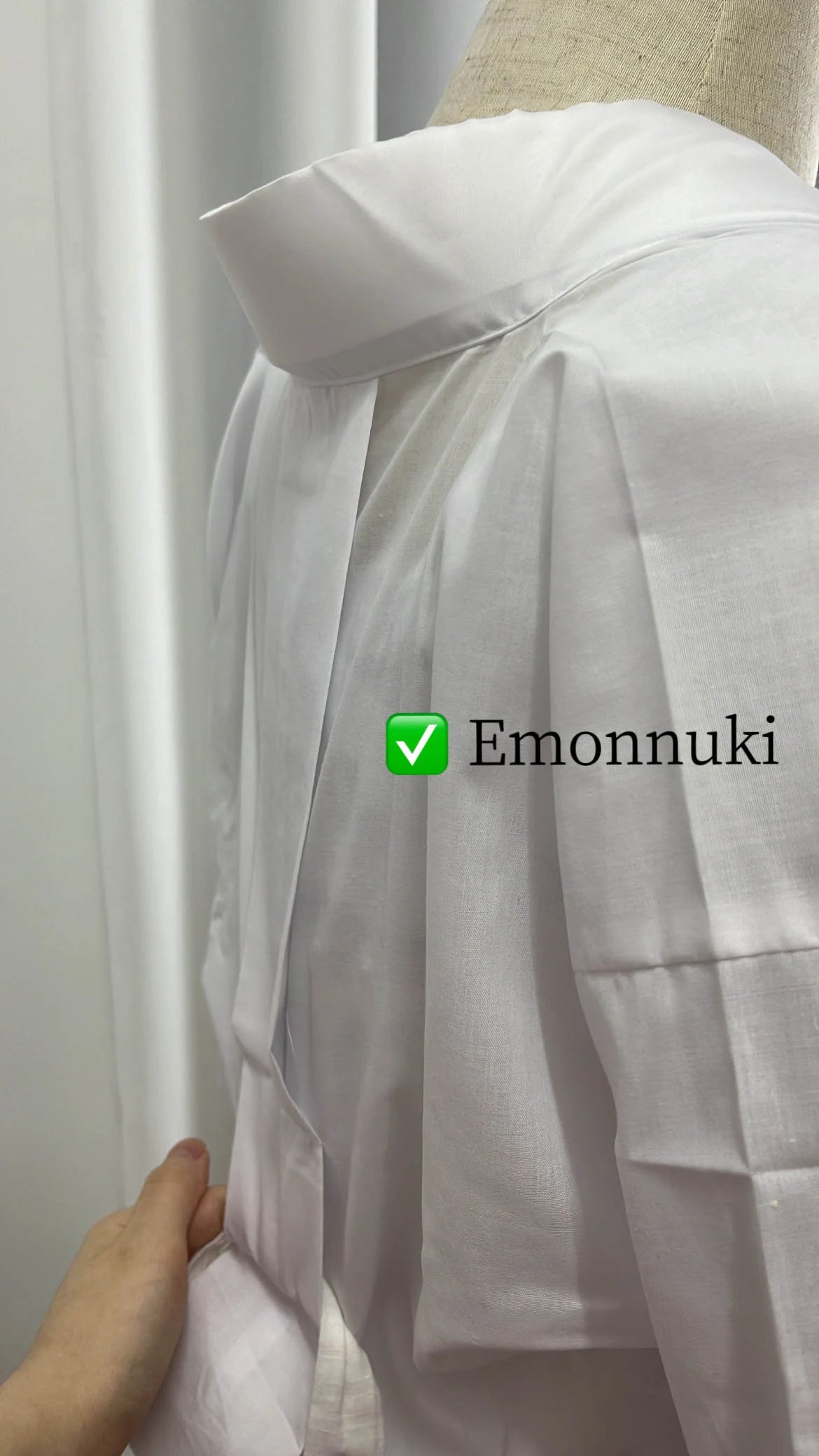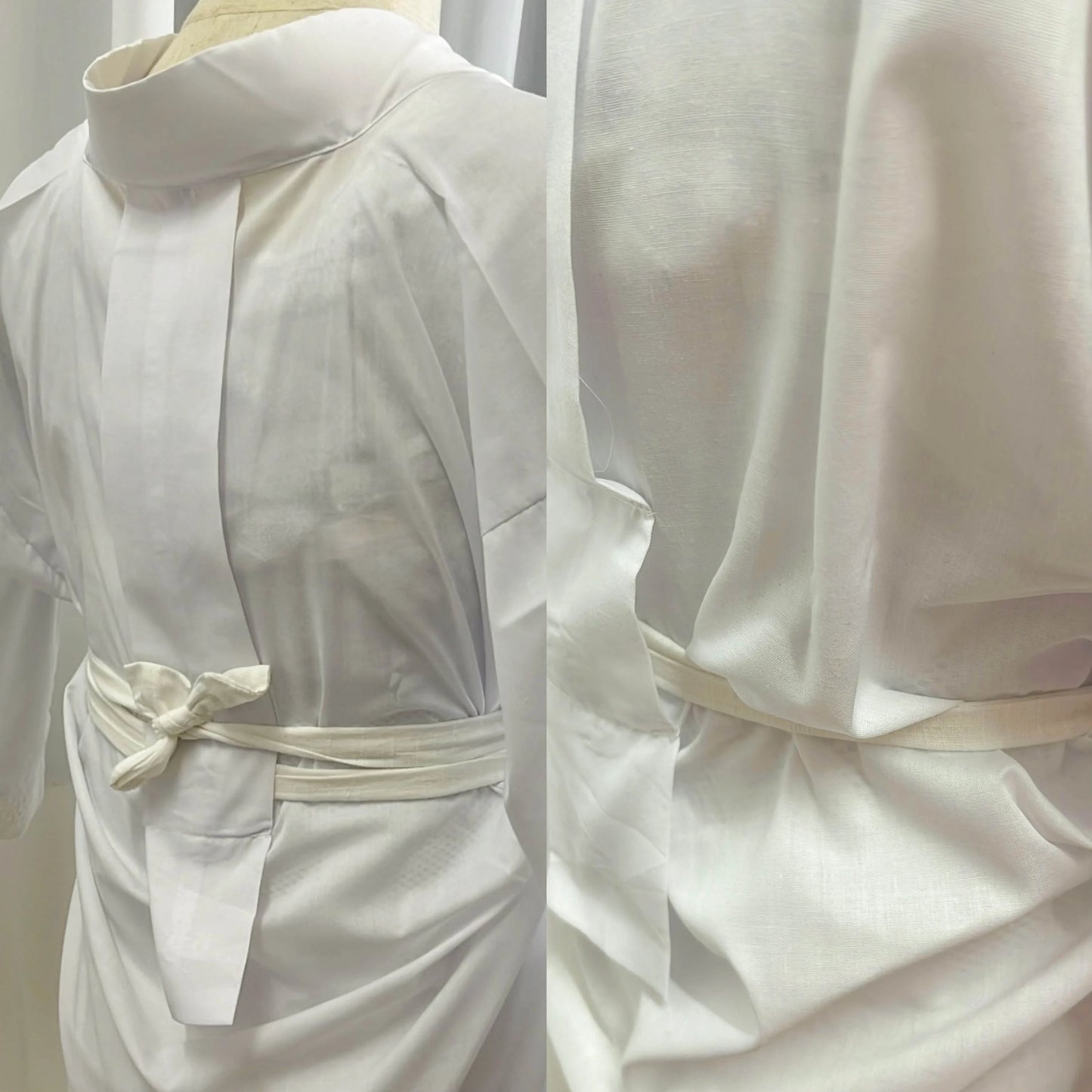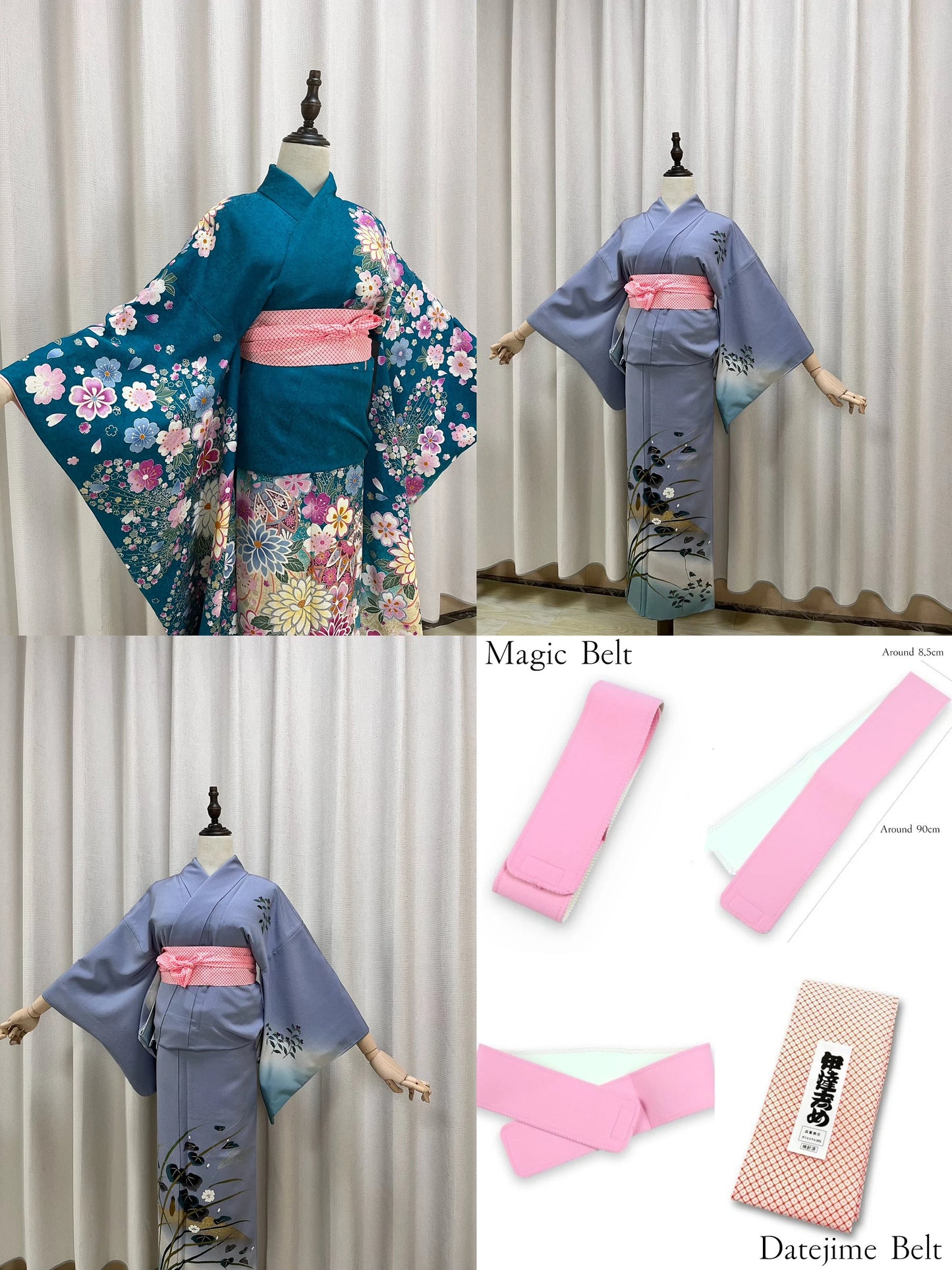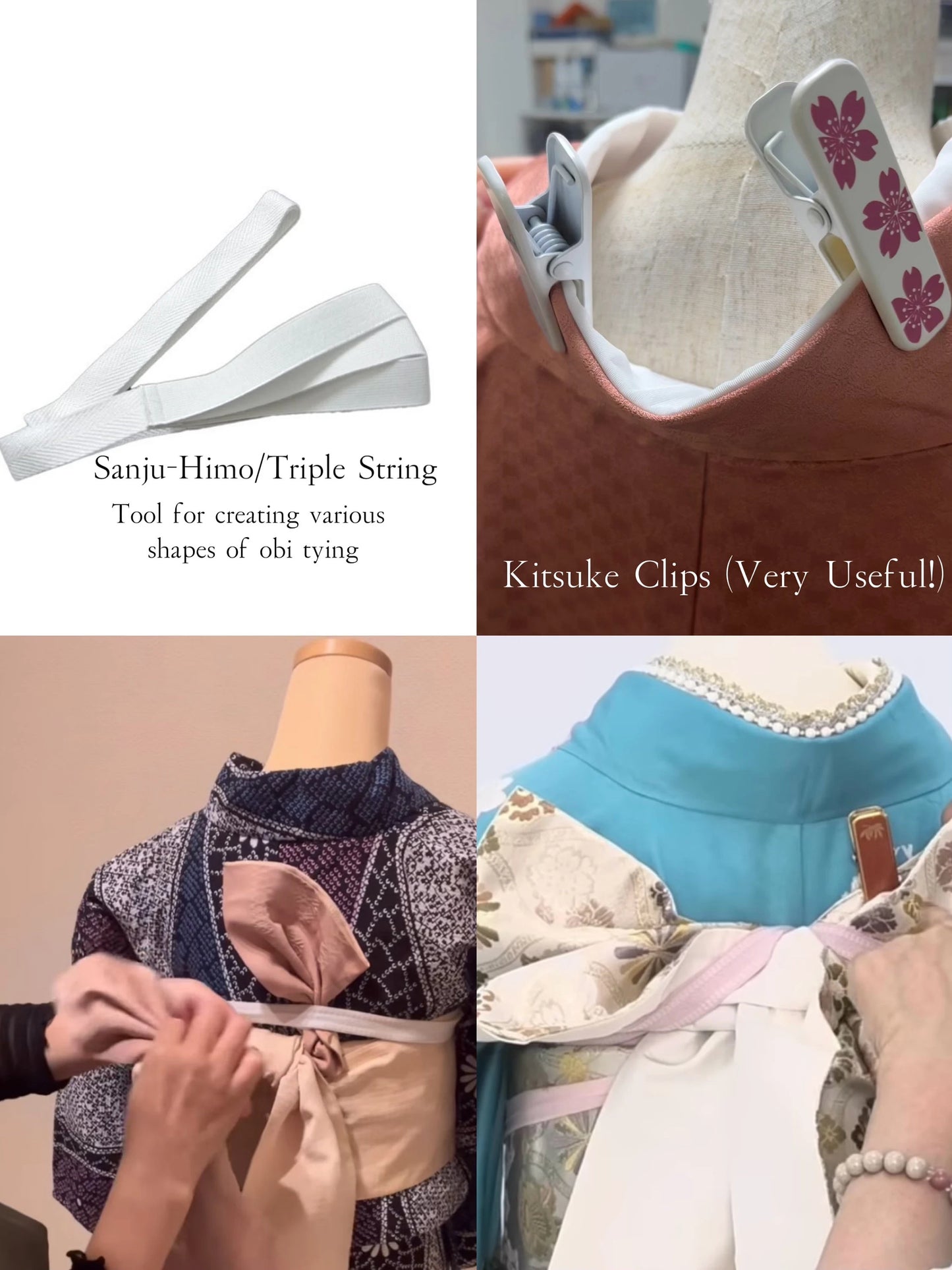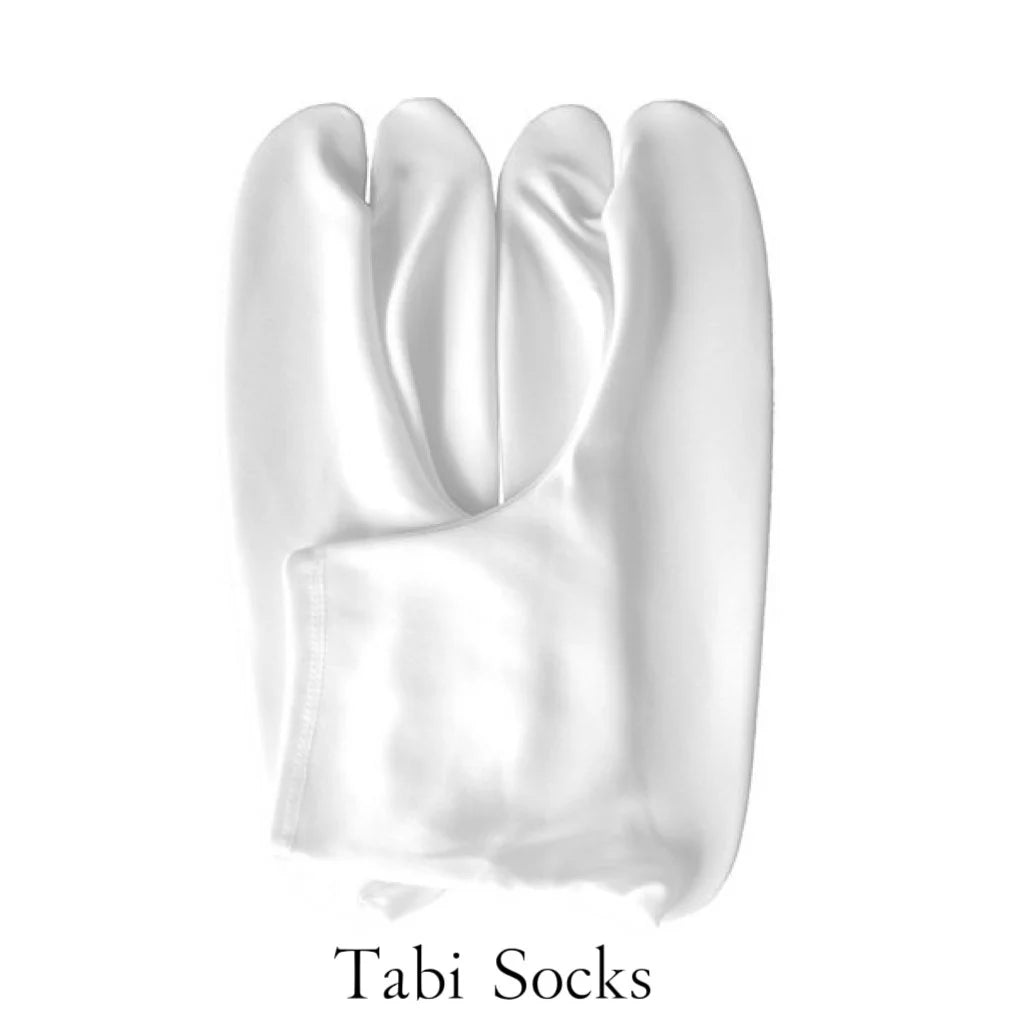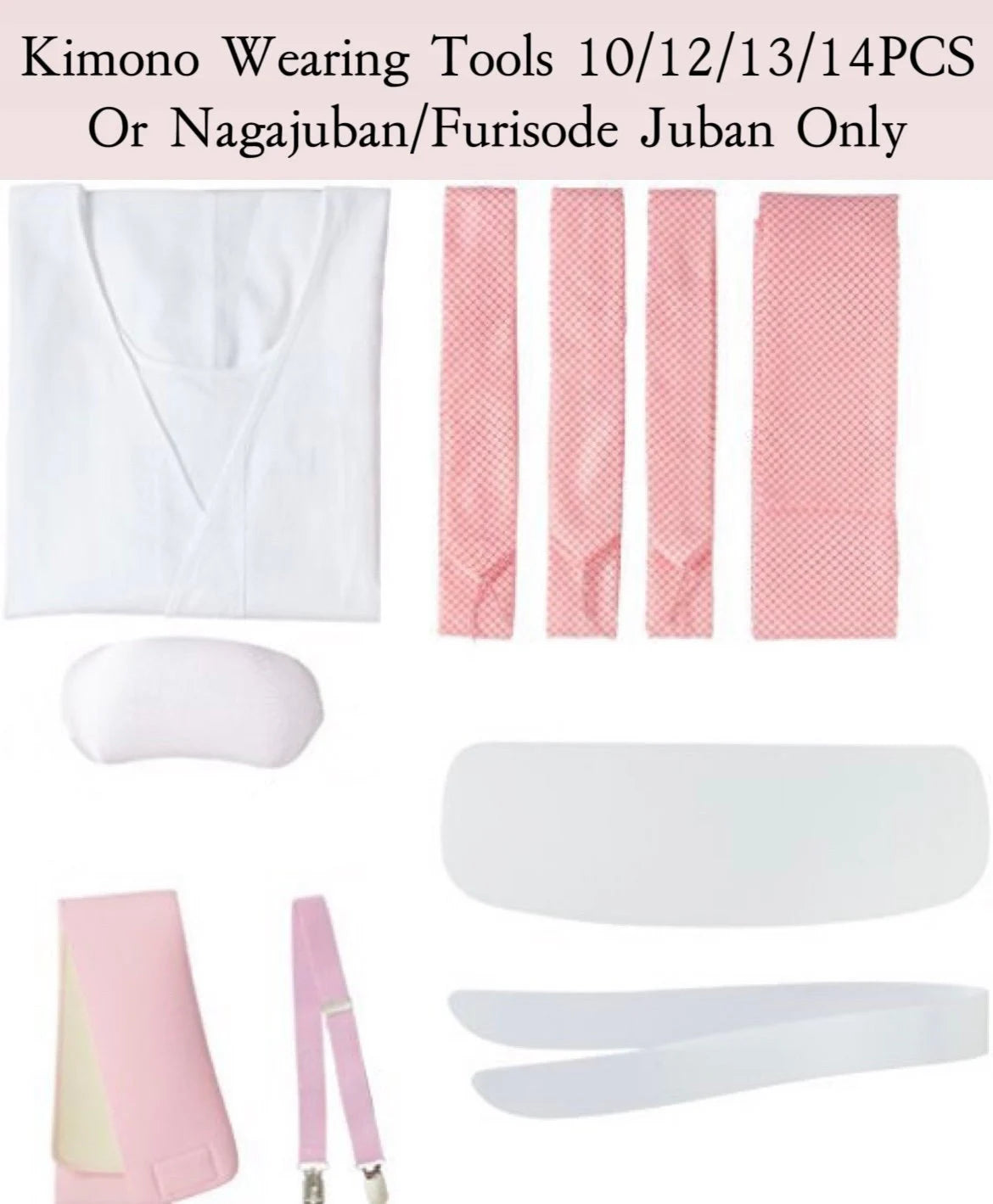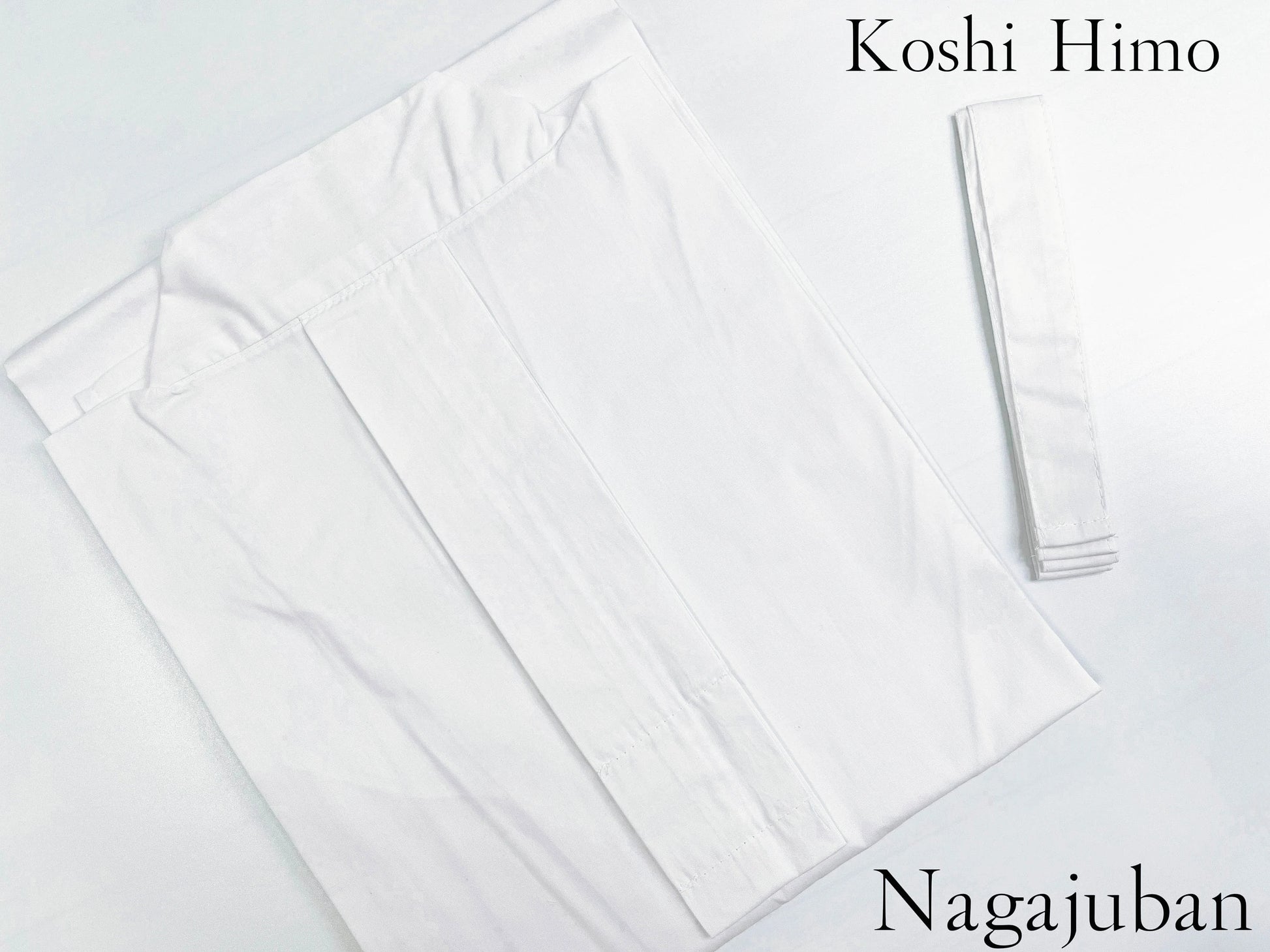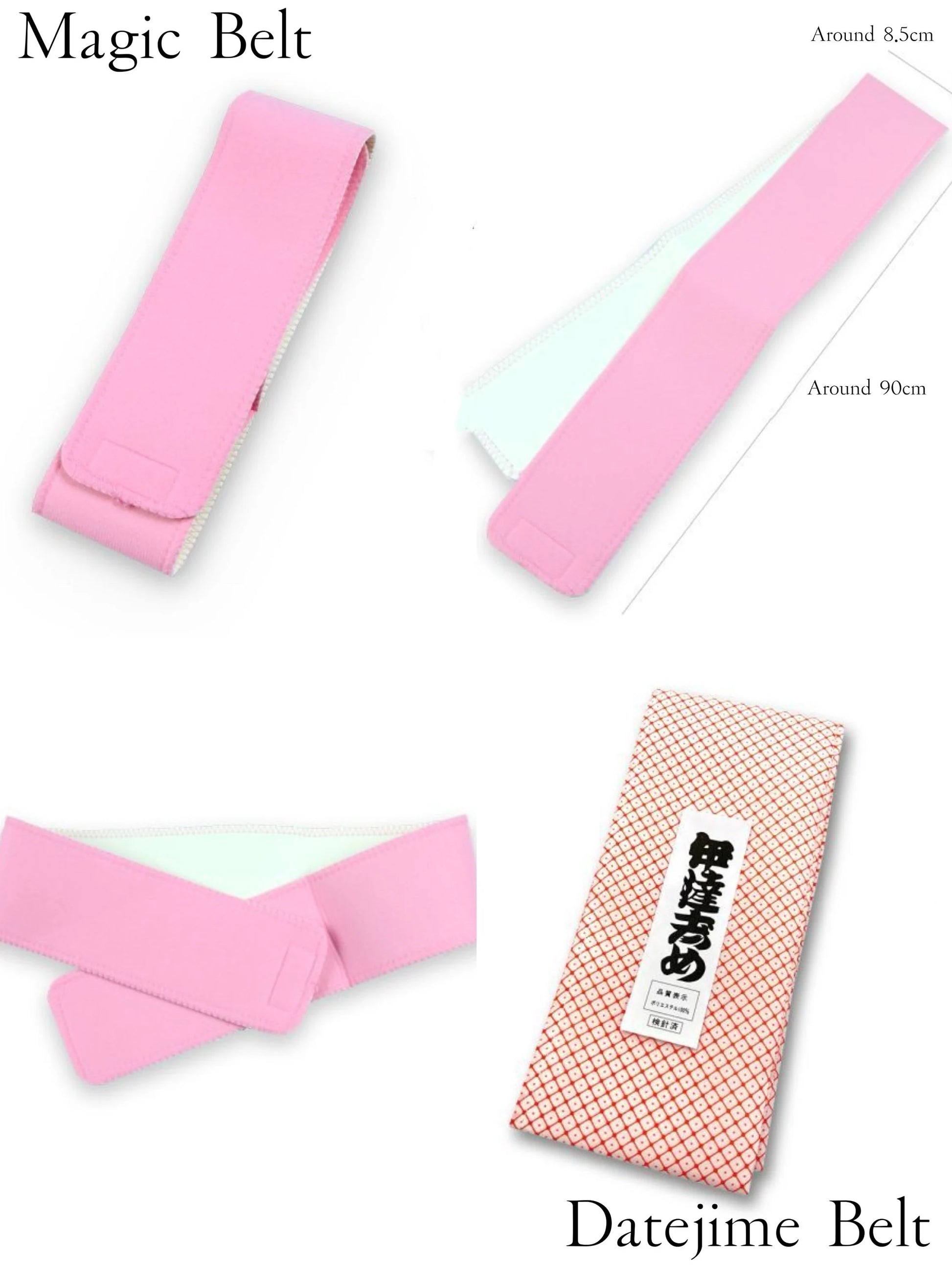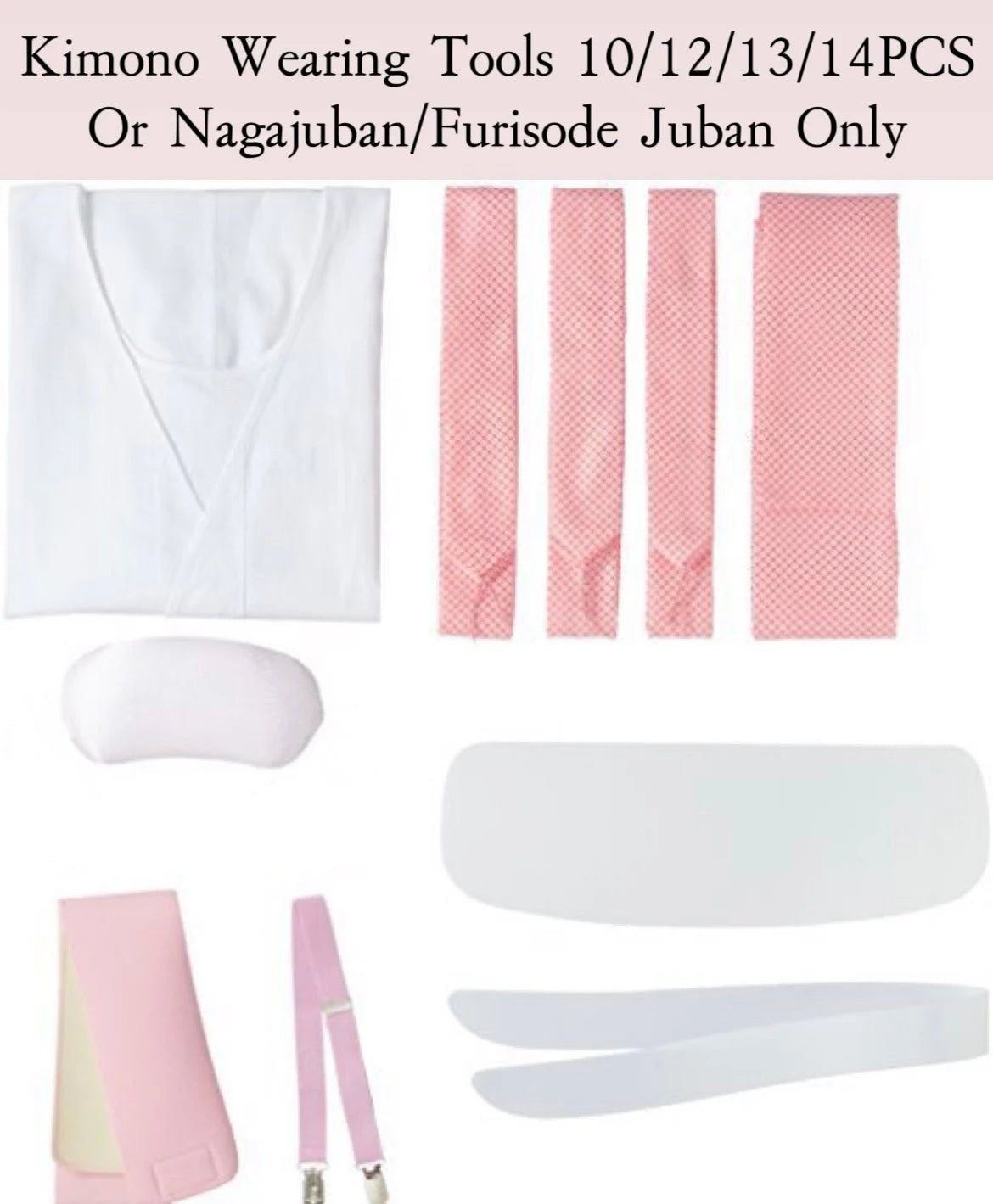Kimono Wearing Tools- 10/12/13/14PCS Kitsuke Tools
Kimono Wearing Tools- 10/12/13/14PCS Kitsuke Tools
Couldn't load pickup availability
10/12/13/14PCS Kimono Wearing Tool Set - Tools for Wearing Kimono/Kitsuke Tools
Options:
- 14PCS (A): All items (Cotton NagaJuban/Can be used for both short-sleeve and long-sleeve kimono)
- 14PCS (B): All items (Cotton & Linen Furisode NagaJuban/Sleeve Length 83cm)
- 13PCS (A): All items except Kitsuke Clips (Cotton NagaJuban)
- 13PCS (B): All items except Kitsuke Clips (Cotton & Linen Furisode NagaJuban/Sleeve Length 83cm)
- 12PCS (A): All items except Kitsuke Clips & Tabi Socks (Cotton NagaJuban)
- 12PCS (B): All items except Kitsuke Clips & Tabi Socks (Cotton & Linen Furisode NagaJuban/Sleeve Length 83cm)
- 12PCS (C): All items except NagaJuban Undergarment/Eri-Shin (collar stiffener)
- 10PCS: No NagaJuban Undergarment/Eri-Shin (collar stiffener)/Tabi Socks/ Kitsuke Clips
- Cotton NagaJuban (Can be used for both short-sleeve and long-sleeve kimono) & Eri-Shin
- Cotton & Linen Furisode NagaJuban/Sleeve Length 83cm & Eri-Shin
**Introduction of different kimono kitsuke tools
1 & 2. NagaJuban Undergarment*1 & Eri-Shin (collar stiffener)*1
A nagajuban is a robe-like garment worn under traditional Japanese kimono. Made of breathable cotton or synthetic fabric, the nagajuban serves to protect the kimono from sweat and stains, and provide comfort against the sometimes stiff kimono material. Only the nagajuban's collar is visible when worn under the kimono, adding an important finishing touch to the classic look.
Eri-Shin(the collar stiffener) is used to help maintain the proper shape and structure of the kimono's neck and collar area.
There is an emonnuki, attached to the base of the juban collar. It allows a korin belt or koshimo to be pulled through its loops. This helps keep the collar securely pulled down and in place. The emonnuki on the juban is highly effective in maintaining the collar's ideal shape. This is important for creating a beautiful exposed neckline when wearing the kimono.
3 & 4. HadaJuban*1 & Susoyoke*1 (Undergarment)
They are worn underneath the nagajuban as the first layer that touches the skin.
They are worn to prevent the nagajuban and ultimately the kimono to get any sweat on them as the hadajuban can easily be washed whereas nagajuban and kimono can often not if they are made of silk.
5. Koshihimo/ Koshi himo Tie/Belt*3-- strings to prevent the kimono from slipping
Koshihimo are soft strings that used to tie the kimono or yukata and keep it from opening. Typically, you need at least 3 koshihimo for wearing a kimono. For tying obi belts, you often need even more koshi himo, usually 2-4 additional ones depending on the specific obi knots you are making.
How to use the three koshihimo
1. Wear Nagajyuban and tie it under your chest.
2. Put on a kimono and tie it to make Ohasyori.
3. Tie under the chest of the kimono.
6. Korin belt*1
It is a convenient item that can be snapped on by sandwiching the collar to prevent the collar from opening loosely. Both ends are clips, and the belt part is rubber. You can also adjust the length, and the way the collar is aligned is stable and prevents it from collapsing. Can be used instead of himo.
7 & 8. Datejime belt* 1+Magic belt* 1
It's used to tie and hold the kimono, hold a kimono shut underneath the more decorative obi.
Date-jime is the second belt to tie around the waist over Koshi Himo first belt (before Obi belt) to hold Nagajuban and Kimono in place. If the datejime has a velcro closer, it is also celled magic belt.
9. Obi Makura/Obi Pillow/Obi Pad/Pad for obi*1(Color: Black/Pink/White)
This is an obi accessory that get tied around the torso to keep the obi secured and to hold the obi in the correct shape after being tied. It keeps the shape of obi beautiful. It is necessary when tying most of the obi knots.
10. Front obiita broad*1 —A tool to prevent wrinkles on the obi
To stiffen the front of an obi. Insert into obi fold at the front to stiffen obi and prevent creasing and keep shape of obi while moving.
11. Back obi-ita board*1 —A tool to prevent wrinkles on the obi
12. Sanju-himo/triple string *1
This strap is a tool used for dressing in more formal obi types like furisode obi-musubi. It enables you to create various shapes of obi tying.
13. A Pair of Tabi Socks*1
14. Kitsuke Clips* 5
Unless you are an experienced kimono wearer, it is highly recommended that some sort of clip is used in the process of dressing. It has a lot of tension and a soft rubber layer inside. I recommend having at least three. One is used to clip the collars at the back to prevent the centers from slipping, and another are used to help with tying the obi, such as clipping the loose end to your body so it doesn't fall down before you need to move it. It's also useful in preventing the layers of obi around your waist from loosening before you get the chance to secure it with an obi-makura.
**Shipping - Phone Number Required
Due to recent changes in customs policies in certain regions, we kindly request all U.S. customers and those using FedEx to provide their phone numbers when shopping. This information is necessary for the required documentation. Without it, your package may not be shipped to your country.
We appreciate your cooperation and encourage customers shipping to other countries to also provide their phone numbers for smoother delivery. Thank you!
**Shipping - Phone Number Required
Due to recent changes in customs policies in certain regions, we kindly request all U.S. customers and those using FedEx to provide their phone numbers when shopping. This information is necessary for the required documentation. Without it, your package may not be shipped to your country.
We appreciate your cooperation and encourage customers shipping to other countries to also provide their phone numbers for smoother delivery. Thank you!
Share
